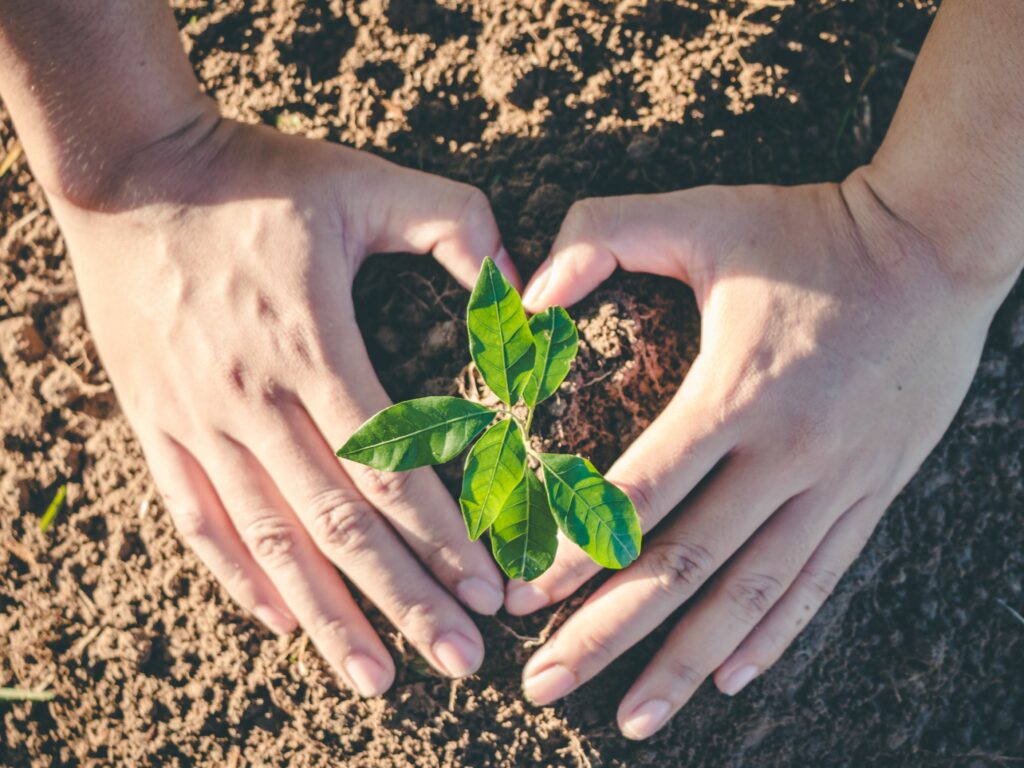By Deanna Alderson, Climate Writer

World Planting Day is March 21st, and there’s no better way to usher in the start of spring than by making our planet a bit greener. This month, we’re supporting Kate Sessions Commitment, an organization dedicated to planting trees throughout every San Diego neighborhood. They’ve partnered with local nurseries to make healthy trees readily available, and they’ll help you find a tree that suits your growing location. Here are five ways that trees keep our planet—and our neighborhoods—healthier and more resilient to climate change.
1. Trees play a critical role in the global carbon cycle.
Trees and plants absorb carbon dioxide from the atmosphere as part of photosynthesis, the process that allows them to turn sunlight into energy. All of that absorbed carbon becomes part of the tree’s tissues—its trunk, branches, roots, leaves and seeds. And because trees can live for decades, that carbon remains stored, or sequestered, in forests for many years, preventing it from becoming greenhouse gasses in the atmosphere.
Globally, forests act as a carbon sink, removing about 30% of C02 emissions from the atmosphere every year. Unfortunately, deforestation continues at an alarming pace, and we’re losing millions of acres of forests every year. When the land is cleared, which often involves cutting and then burning the downed trees, the stored carbon is released back into the atmosphere. Forests are being destroyed so quickly that many of our planet’s largest forests are now releasing more carbon dioxide than they’re absorbing.
2. Trees help regulate temperature, humidity and weather patterns.
Most of us probably don’t think of trees when we’re talking about the weather, but there’s solid evidence that trees, and deforestation, influence weather patterns. A recent study from the University of Leeds concluded that tree loss was leading to a measurable drop in tropical rainfall, during both the wet and dry seasons.
Trees trap water in their leaves, and as that moisture is slowly released, it contributes to more rainfall. Forests, especially those with thick canopies, help slow evaporation and block out sunlight, creating a cooler, more humid microclimate. Scientists are concerned that tropical rainforests like the Amazon may be reaching a tipping point; if too many trees are lost, the forest may no longer be able to sustain itself as an ecosystem due to extreme changes in rainfall and temperature.
3. Trees keep urban neighborhoods cooler during the summer heat.
Just like in the rainforest, trees create a beneficial microclimate in urban neighborhoods too. As temperatures rise, concrete and asphalt can get very hot—in direct sunlight, asphalt is often 40 to 60 degrees hotter than the air temperature. This can cause city neighborhoods to become “heat islands,” where buildings, roads and paved surfaces emit so much heat that air temperatures become warmer than surrounding areas.
According to the EPA, urban surfaces shaded by trees may be 25-40F cooler than unshaded surfaces, and the water released from trees through evaporation also helps lower temperatures. With more trees and vegetation, the heat island effect is reduced, and residents use less energy on air conditioning. Trees also work as natural air filters, lowering pollution in our car-filled cities.
4. Trees mitigate the effects of the flooding and water pollution.
We might not think of trees as giant sponges, but they are excellent at absorbing excess water. During heavy rainfall, mature trees can take in more than 100 gallons of water in a single day. Planting trees and ground vegetation next to roads and sidewalks helps prevent urban runoff; vegetation also stabilizes the small hillsides and ridges that are common in California neighborhoods.
Trees act as natural water filters, removing pollutants and sediments from rainwater. This cleaner water slowly works its way back to waterways, and it requires less treatment to become safe drinking water. Over 57 million Americans rely on water that comes from forests, so healthy forests are essential to safe and stable water supplies.
5. Trees boost our mental and physical health.
People have long realized the benefits of spending time in nature, and now there’s research to back it up. Studies have shown that people who spend more time outdoors, especially among trees, have lower rates of depression and chronic disease. Some states are even recommending walks in the forest as a public health measure to reduce stress and blood pressure. Even a few minutes spent in a relaxing green space can make us feel better, so be sure to make spending time outdoors part of your daily routine.
Keeping trees healthy in San Diego County

Planting trees in your own yard or neighborhood is a great way to add shade and greenery to urban spaces, but remember that watering is key to keeping trees growing throughout the hot summer months. Young trees are particularly vulnerable to high temperatures and can dry out quickly; we can’t establish a healthy canopy throughout San Diego unless young trees are well cared for. If you want to learn more about caring for trees, visit this page on growing healthy trees from Kate Sessions Commitment.
